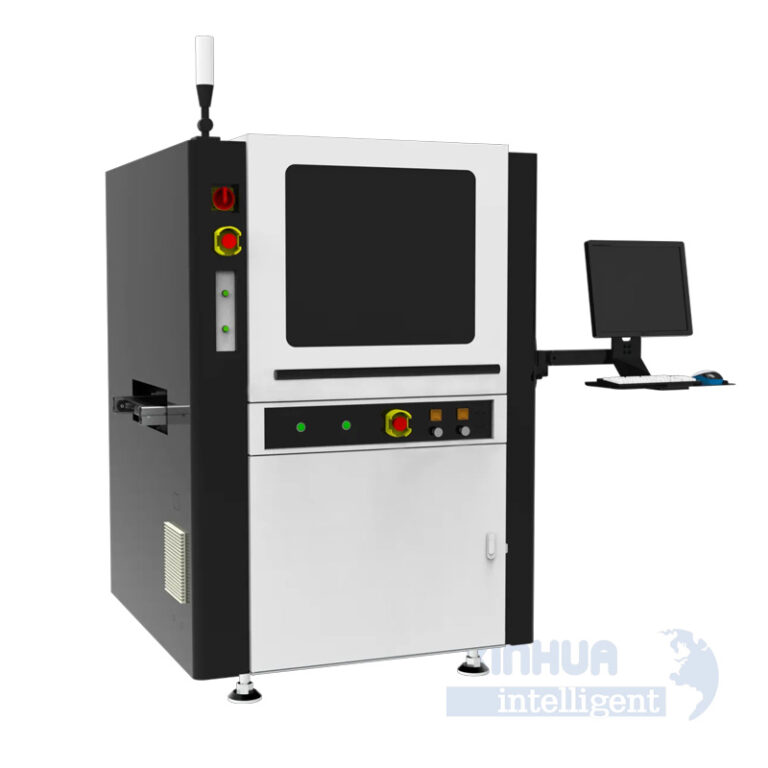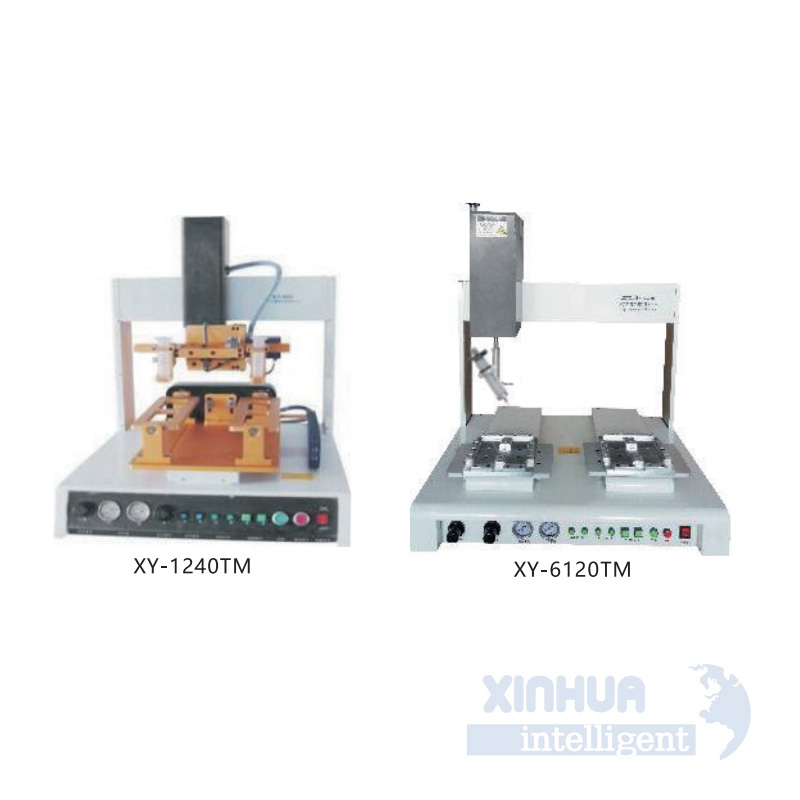
SMT Smart Shelf: Revolutionizing Inventory Management for the Modern Enterprise
In today’s fast-paced business environment, inventory management is more critical than ever. The ability to track and manage stock levels in real-time can mean the difference between a successful operation and one that struggles to keep up with demand. Enter the SMT Smart Shelf—a cutting-edge solution designed to address many of the challenges faced by organizations across industries. This article explores the common pain points associated with traditional inventory systems, the practical and technical solutions offered by SMT Smart Shelves, their real-world applications, and concludes with a call to action highlighting Xinhua Intelligent as a leader in this space.
—
Section 1: Common Pain Points or Challenges in Traditional Inventory Management
Traditional inventory management systems often rely on manual processes, outdated technologies, or even guesswork. While these methods may have sufficed in the past, they are increasingly inadequate for modern businesses operating in highly competitive markets. Below are some of the most prevalent challenges:
Manual Errors
Manual inventory tracking is prone to human error. Whether it’s miscounting items, recording incorrect data, or failing to update records promptly, these mistakes can lead to overstocking, stockouts, or inaccurate financial reporting. Over time, such errors accumulate, causing significant operational inefficiencies and increased costs.
Lack of Real-Time Visibility
Many organizations struggle with delayed or incomplete information about their inventory levels. Without real-time visibility, decision-makers cannot respond quickly to changes in demand, production schedules, or supply chain disruptions. This lack of transparency leads to poor planning and resource allocation.
High Labor Costs
The labor-intensive nature of manual inventory checks drives up operational expenses. Employees spend hours counting, rechecking, and reconciling discrepancies, which diverts them from higher-value tasks that could contribute more directly to business growth.
Inefficient Space Utilization
Traditional shelving systems often fail to optimize warehouse or storage space effectively. Poor organization and inefficient layouts result in wasted square footage, making it harder to scale operations without expanding physical facilities.
Difficulty in Tracking Asset Usage
For companies that rent out tools, equipment, or other assets, monitoring usage patterns and ensuring timely returns can be challenging. Without an automated system, tracking individual item movements becomes cumbersome and unreliable.
These pain points underscore the need for smarter, more efficient inventory management solutions. The SMT Smart Shelf addresses each of these issues through advanced technology and innovative design.
—
Section 2: Practical and Technical Solutions Offered by SMT Smart Shelf

The SMT Smart Shelf leverages state-of-the-art technologies to provide robust solutions to the challenges outlined above. Here’s how it works:
RFID Technology for Accurate Tracking
At the heart of the SMT Smart Shelf is Radio Frequency Identification (RFID) technology. Each item placed on the shelf is tagged with an RFID chip, allowing the system to automatically detect its presence, quantity, and location. This eliminates the need for manual scans and reduces the likelihood of errors. Furthermore, RFID enables non-line-of-sight reading, meaning items don’t need to be visible to be counted—a major advantage over barcode-based systems.

IoT Integration for Real-Time Data
SMT Smart Shelves are connected via the Internet of Things (IoT), enabling continuous communication between shelves, central servers, and user interfaces. This connectivity provides real-time updates on inventory levels, movement history, and environmental conditions like temperature or humidity. Decision-makers can access this data instantly, empowering them to make informed choices based on current realities rather than outdated reports.
Weight Sensors for Precision Monitoring
In addition to RFID, many SMT Smart Shelves incorporate weight sensors to monitor inventory levels with precision. These sensors detect when an item is removed or added, triggering alerts if thresholds are breached. For example, if a product falls below a predetermined reorder point, the system automatically generates a purchase order, streamlining the replenishment process.
User-Friendly Interface for Enhanced Usability
To ensure ease of adoption, SMT Smart Shelves come equipped with intuitive software dashboards and mobile apps. Users can view detailed analytics, set custom alerts, and generate comprehensive reports with just a few clicks. The platform also supports multi-user access, allowing teams to collaborate seamlessly while maintaining accountability.
Scalability and Customization
One of the standout features of SMT Smart Shelves is their scalability. Whether you operate a small retail store or a sprawling manufacturing facility, the system can grow alongside your business needs. Additionally, customization options allow users to tailor the setup to specific requirements, such as configuring different zones for high-priority items or integrating with existing enterprise resource planning (ERP) systems.
By combining these technologies, SMT Smart Shelves deliver unparalleled accuracy, efficiency, and control in inventory management.
—
Section 3: Real-World Applications of SMT Smart Shelf
The versatility of SMT Smart Shelves makes them suitable for a wide range of industries. Below are some examples of how organizations are leveraging this technology to achieve tangible benefits:
Healthcare Industry
Hospitals and clinics use SMT Smart Shelves to manage medical supplies, pharmaceuticals, and surgical instruments. By automating inventory tracking, healthcare providers reduce waste from expired medications, minimize stockouts during emergencies, and improve patient care through better resource allocation.
Example: A hospital pharmacy implemented SMT Smart Shelves to monitor controlled substances like opioids. The system ensured compliance with regulatory requirements by providing detailed logs of who accessed what and when, reducing theft and misuse.
Retail Sector
Retailers deploy SMT Smart Shelves to streamline backroom operations and enhance customer experiences. Automated restocking notifications help prevent empty shelves, while real-time data empowers retailers to adjust pricing strategies dynamically based on sales trends.
Example: A fashion retailer installed SMT Smart Shelves in its distribution center. The system identified slow-moving SKUs and suggested markdowns, resulting in a 15% increase in clearance sales.
Manufacturing and Logistics
Factories and warehouses benefit from SMT Smart Shelves by optimizing material handling processes. Precise tracking of raw materials and finished goods improves Just-In-Time (JIT) manufacturing practices, lowers carrying costs, and enhances overall productivity.
Example: An automotive parts manufacturer used SMT Smart Shelves to track component inventories at multiple locations. The system reduced downtime caused by missing components by 20%, saving thousands of dollars per month.
Educational Institutions
Universities and vocational schools utilize SMT Smart Shelves to manage laboratory equipment, textbooks, and other resources. Students and faculty members can easily check out items using self-service kiosks, freeing up administrative staff for other duties.

Example: A technical college introduced SMT Smart Shelves in its engineering lab. The system tracked tool usage patterns, helping instructors allocate resources more efficiently and identify areas for curriculum improvement.
Hospitality and Food Service
Restaurants and hotels employ SMT Smart Shelves to manage perishable goods, ensuring freshness and minimizing spoilage. Alerts notify staff when inventory levels dip too low, prompting timely orders before shortages occur.
Example: A luxury hotel chain integrated SMT Smart Shelves into its kitchens. The system reduced food waste by 10% and improved menu planning by analyzing ingredient consumption trends.
These diverse applications demonstrate the adaptability of SMT Smart Shelves across various sectors. Regardless of industry, the core advantages—accuracy, efficiency, and cost savings—remain consistent.
—
Section 4: Conclusion and Call to Action
As we’ve seen, the SMT Smart Shelf offers a transformative approach to inventory management, addressing long-standing challenges with innovative technology and practical solutions. Its ability to eliminate manual errors, provide real-time visibility, reduce labor costs, and optimize space utilization positions it as a must-have tool for forward-thinking organizations.
If you’re ready to take your inventory management to the next level, consider partnering with Xinhua Intelligent, a leader in smart shelving solutions. With years of experience and a commitment to quality, Xinhua Intelligent delivers tailored systems designed to meet the unique needs of your business. From initial consultation to installation and ongoing support, their team ensures a seamless transition to SMT Smart Shelf technology.
Don’t let outdated inventory practices hold your business back. Contact Xinhua Intelligent today to learn more about how SMT Smart Shelves can drive efficiency, boost profitability, and give you the competitive edge you need to thrive in today’s market.
Your success starts here.
